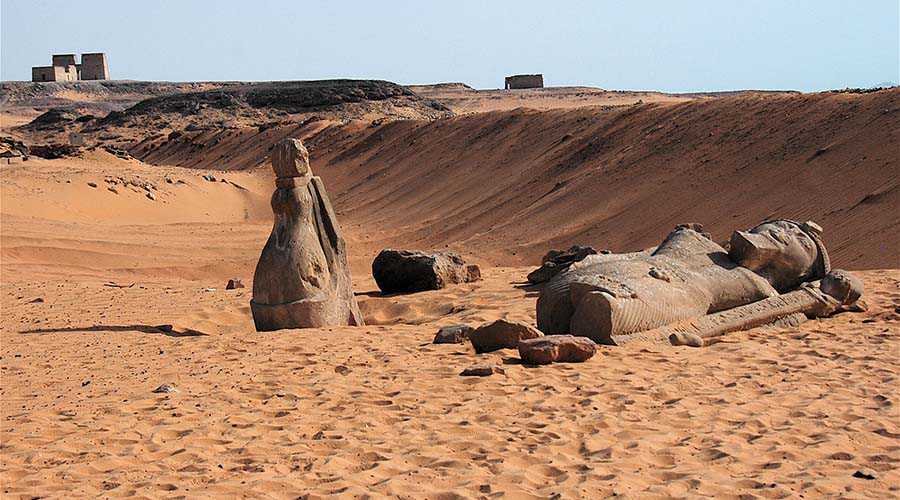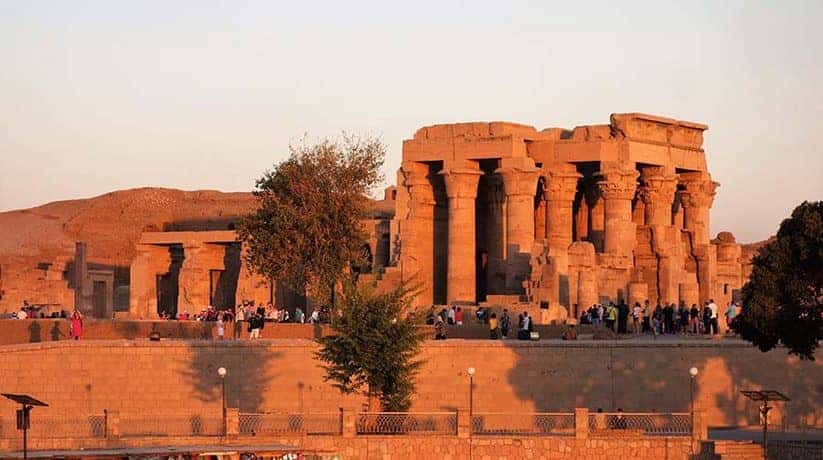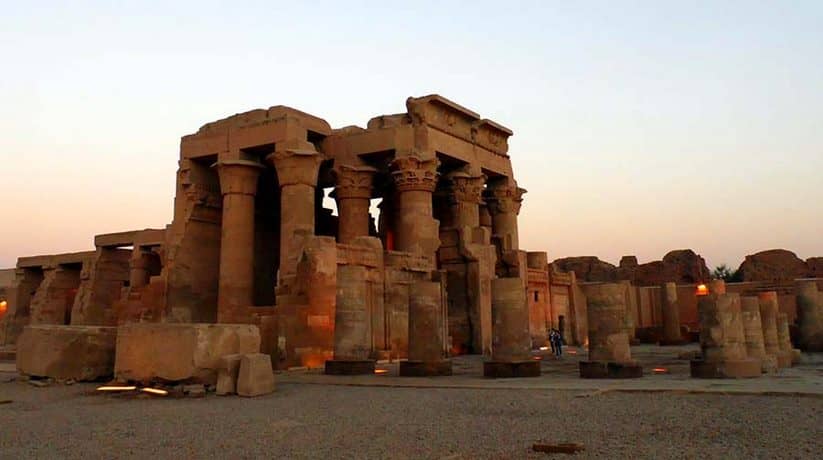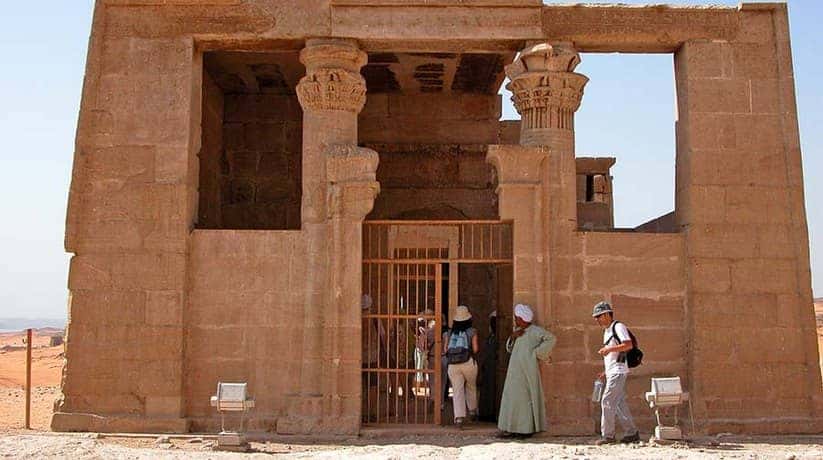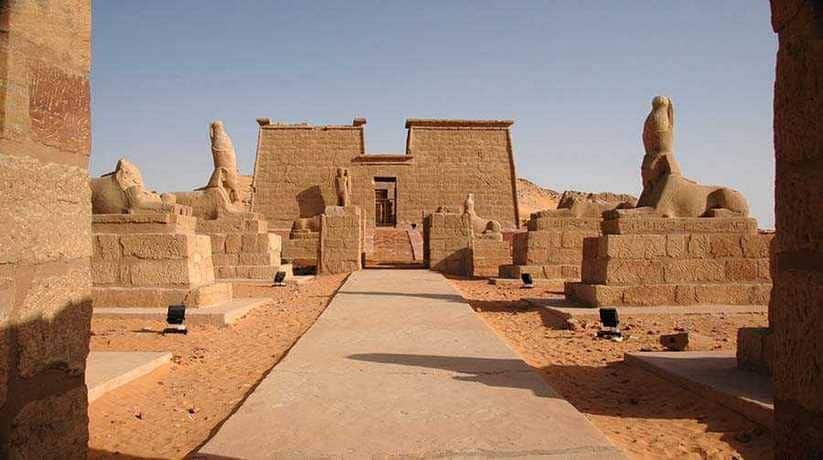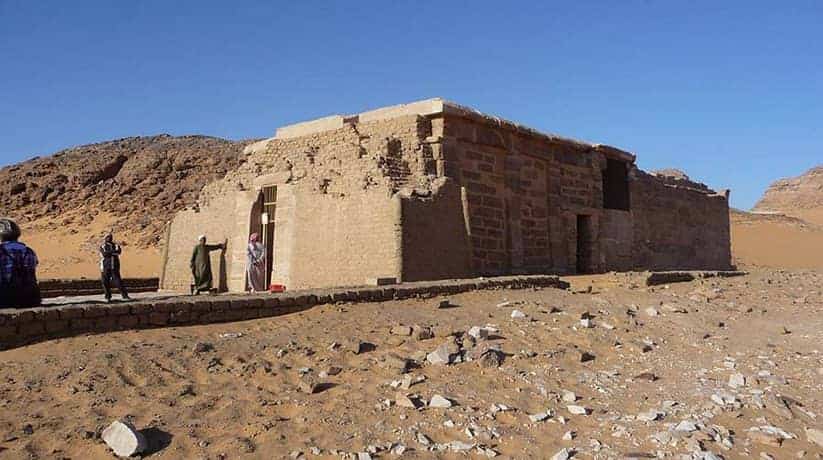Aswan temples Egypt tours, booking, prices, reviews
Aswan temples include Amada temple which located about 180 kilometers south of Aswan High Dam. In fact, Amada temple dedicated to the New Kingdom gods, Amun-Re and Re-Horakhty. The temple built on the orders of Thutmose III and his son, Amenhotep II. It was during Egypt’s New Kingdom 18th Dynasty. The hypo-style hall was a later addition by Thutmose IV. In fact, Seti I had a hand in some small additions such as a large pylon. The pylon is with a sandstone gateway abutting against the hypo-style hall. It is along with other 19th Dynasty rulers including his son, Ramses II. Ramses II involved himself in some way with almost every Nubian temple built before his reign. However, Ramses II’s restoration of the temple noted as rather a poor effort.
Aswan temples also include Dakka temple which is a Greek-Roman temple and known also as el Dekka temple. The temple dedicated to Thoth of the Sycamore Fig, the god of wisdom. In fact, the temple located about 100 kilometers south of the Aswan High Dam. The south of Aswan High dam referred today as Nubia. Though much of that ancient land covered by Lake Nasser. The temple known to the Egyptians as Pselqet and to the Greeks as Pselchis. In fact, the temple moved to the site of wdi es-Sebua. The site is about 40 kilometers upstream, between 1962 and 1968. It was because of the impending flooding of the region as a result of the High dam. The temple which we see today actually begun by the Nubian king, Akamani. The Greeks called him Ergamenes in about 220 BC. The temple construction appears to be a combined effort.
Further details about Aswan temples:
Aswan temples also include Edfu temple which dedicated to Horus, the falcon headed god. That is why it known as Horus temple. The temple located 60 kilometer north to Aswan in Egypt. Edfu was the 2nd Nome of Upper Egypt and also the center of the cult of a triad of Gods. It consisted of Horus of Behdet, Hathor, and their son, Hor-Sama-Tawy. In the old Greek documents Edfu known as “Apollopolis Magna”. In fact, it is because the Greeks identified Horus with their God Apollo. The temple built during the reigns of six Ptolemies. We have a great deal of information about its construction from reliefs on outer areas. In fact, the temple begun in 237 BC by Ptolemy III Euergetes I and finished in 57 BC.
Aswan temples also include El Derr temple which located 280 kilometer south of Aswan, Egypt. In fact, the temple is Nubian temple which hewn out of the rock. Moreover, the temple dismantled in 1964 to save it from the waters of Lake Nasser. It was after the construction of Aswan High Dam. El Derr temple Aswan moved to a new location which is close to Amada temple. The temple built during the 30 years of Ramses II reign. It was to celebrate his Sed festival. In fact, the temple is similar in many respects to his other Speos style monuments in Nubia. In fact, some of the temple’s decorations lost due to its use as a church by early Christians. However, many scenes remain at the temple. The scenes include one which depicts a procession of Ramses II children with girls on one side of the temple.
More details about the temples:
Aswan temples also include Kalabsha temple. In fact, it is a Nubian temple which located south of Aswan. In fact, the temple was a part of the rescue operation for monuments which threatened by waters of Lake Nasser. Kalabsha temple Aswan transported to the present site courtesy of the German Federal Republic. It was in a salvage operation which sponsored by UNESCO in the 1960. The temple original position was 56 km south of Aswan. It was until it dismantled and moved to the island which now called New Kalabsha. The island is just south of the Aswan High Dam. It seen from the Dam through a good pair of binoculars. The temple built over an earlier New Kingdom site. It was during the Roman Period for Caesar Augustus. In fact, the temple dedicated to Isis, Osiris and Horus-Mandulis.
Aswan temples also include Kom Ombo temple which located in the town of Kom Ombo. In fact, the town is an industrial town 45 km north of Aswan. Its classical name was Ombos and its ancient name is Nebet. It placed between Edfu and Aswan as a garrison town on an important trading route. The Ptolemaic temple and ancient town site is a few kilometers from the modern town. It is on a promontory on the east bank of the Nile. In fact, Kom Ombo temple Aswan indeed is unusual. It dedicated to two triads of deities. Each with its own associated chambers and sanctuaries. Moreover, on the eastern side of the temple, the crocodile god Sobek honored with his wife. The wife here named as Hathor and their son Khonsu.
Further details about the temples:
Aswan temples also include Meharakka temple which built under Roman rule. In fact, the temple not finished. Meharakka temple Aswan indeed is special. It is because it has the only spiral staircase in any ancient Egyptian structure. The temple dedicated to Serapis, the Alexandrian god. This god introduced in Egypt in Ptolemaic times. The god is a fusion of the Egyptian Gods Osiris, Apis, the Greek gods Zeus and Aesculape. In fact, Al-Meharakka is a place in Lower Nubia which was approximately 120 km south of Aswan. It was on the southern border of the Roman empire. The Kushites from the kingdom of Meroe launched a raid on the First cataract region of Egypt in 23 BC. It was only a few years after the Roman conquest of Egypt in 30 BC.
Aswan temples also include Philae temple which located 12 kilometers south of Aswan. In fact, the temple was an ancient pilgrimage center for the cult of Isis. It also was for the dazzled travelers with its power for centuries. Philae temple Aswan is sacred site. It venerated from the Pharaonic era up to the Greek, Roman and Byzantine periods. In these periods, each ruler added his own stamp onto the stones here. The First Pylon at Philae temple Aswan, leads into the main temple area. In fact, the temple features two towers and central doorway. Both of them provide a grand 18 meter high entry. The entry with reliefs by Nectanebo. Moreover, there is a doorway in the western tower with reliefs by Philometor. It leads to the Birth House.
More details about Aswan temples:
Aswan temples also include Qasr Ibrim which stood on the highest of three headlands one day. It was on the east bank of the Nile some 70 meters above the River in Aswan, Egypt. In fact, it was before the construction of the High Dam south of Aswan. Today, Qasr Ibrim is the last on Lake Nasser before reaching Abu Simbel. Visitors may only gaze upon it from the Lake Nasser Cruise boat. In fact, Qasr Ibrim is no longer accessible by tourists. However, the Egypt Exploration Society does continue the work on the site. The work is since 1959. In fact, Qasr is an Arabic word which means fort. So, the Fort of Ibrim is the English translation of Qasr Ibrim. The name derived from its ancient Meroitic name, Pedeme. In classical texts, it called Primis. Moreover, in Coptic called Phrim which corrupted to Ibrim in Arabic.
Aswan temples also include Satis temple which located at Elephantine Island and also known as Satet temple. In fact, Satis was the consort of Khnum. Satis temple Aswan consists of several rooms and a surrounding gallery. The entrance located to the right of the front facade of the temple. It communicates with a large hall with two pillars that decorated with Hathor heads. Within this hall, there is a doorway on the northern rear wall. It leads to a chapel dedicated to Amun. Moreover, Satis temple Aswan has a door on the left of the rear wall. In fact, this door leads to other rooms. The newest, reconstructed temple has carved and painted stone blocks. They show Thutmose III in front of various members of the Elephantine triad. In some areas the original blocks missed.
Further details about the temples:
Aswan temples also include Wadi Es Sebua temple which located about 140 kilometers south of the Aswan High Dam. It located in ancient Nubia on the west bank of the Nile. In fact, two temples built during the New Kingdom’s 18th and 19th Dynasties. One of these temples built by Ramses II and it now referred to as the temple of Wadi es-Sebua. In fact, it known as the “House of Amun”. Wadi Es Sebua temple Aswan salvaged in 1964 and moved to a new elevated site. The site is several kilometers to the northwest. It was after the construction of Aswan High Dam. The second temple which built by Amenhotep III, buried beneath the waters of Lake Nasser. However, five stela from this temple are in the Aswan Museum.


